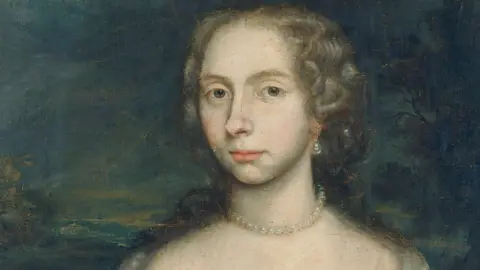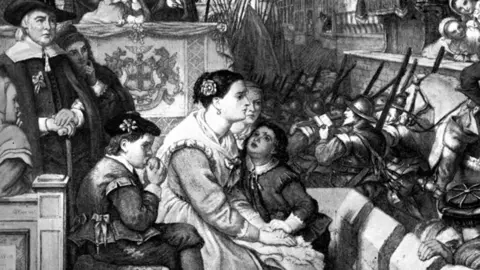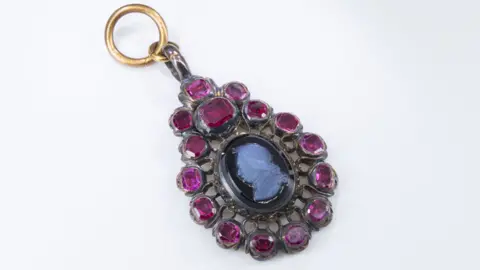Women's remarkable Civil War roles revealed in Huntingdon display
 The Cromwell Museum
The Cromwell MuseumThe women who "rose to the occasion and played a remarkable role in the Civil War" is the theme of an exhibition called The Weaker Vessel?
Historian Stuart Orme said the Biblical phrase was used to denigrate 17th Century women, but their 1640s experiences were "complex and richer".
Women ran businesses, were spies, preachers, accused of witchcraft and faced violence and starvation.
The exhibition is at the Cromwell Museum, Huntingdon, from 6 December.
 Getty Images
Getty ImagesIt aims to challenge the impression in the "popular imagination" that women during the 1640s were "aristocratic ladies defending their husbands' estates, or women camp-followers accompanying armies".
Instead it focuses upon the women who had to "run households and businesses by themselves while their husbands were away and cope with food shortages and rising taxes which rose 1,000% during the 1640s", said Mr Orme.
Both Royalist and Parliamentarian armies placed their soldiers with households in towns and villages.
Mr Orme said: "Huntingdon was briefly captured by the Royalists in 1645 and every house had 20 to 30 soldiers billeted on them.
"These were people who might just have enough to see them through the winter and the soldiers would take all their food before they moved off."
 The Cromwell Museum
The Cromwell MuseumThe exhibition draws upon the work of the Civil War Petitions project, which looks at petitions from veterans and their families for welfare payments as a result of their injuries or bereavement.
Mr Orme said: "This includes complaints about the way women were treated by the soldiers billeted on them - theft, violence and rape were not uncommon."
The museum tells Oliver Cromwell's story from his Huntingdon childhood until his death as Lord Protector in 1658.
So the exhibition features his younger daughters, Mary and Frances, who became the "Puritan princesses"after their father's elevation.
 The Cromwell Museum
The Cromwell MuseumIt also highlights the stories of women such as London-based Elizabeth Purslowe, who ran a printing business, and Katherine Chidley, who was "unusual if not to say scandalous in the 17th Century by being involved in public preaching", said Mr Orme.
She led a march of women on Parliament calling for their Leveller husbands to be freed, but Parliament told them to "concentrate on their washing up".
Jane Whorwood was a Royalist spy, who tried twice to free Charles I from Parliamentarian captivity.
At the same time, "women were accused of being at the root of what was going wrong in this period with a resurgence of witchcraft led by the infamous deeply misogynistic Witchfinder General Matthew Hopkins - 90% of those accused were women", he said.
The Weaker Vessel? Women of the Civil Wars will run until 7 April.

Follow East of England news on Facebook, Instagram and X. Got a story? Email [email protected] or WhatsApp 0800 169 1830
